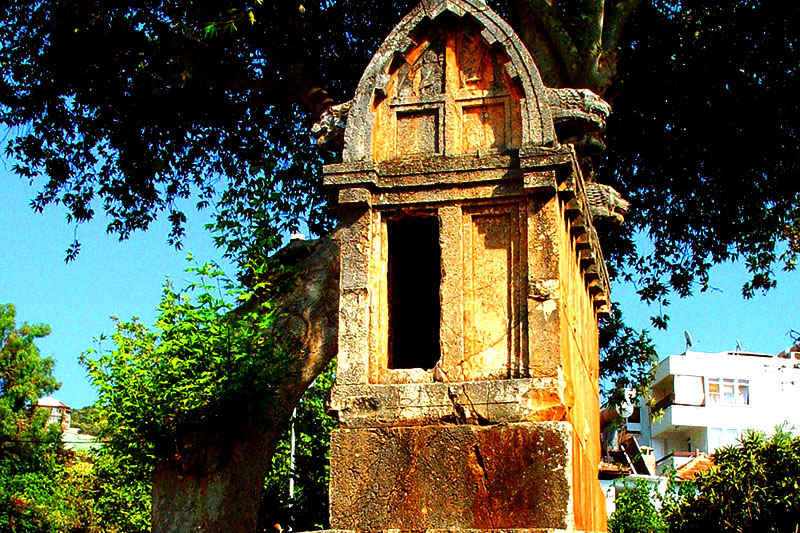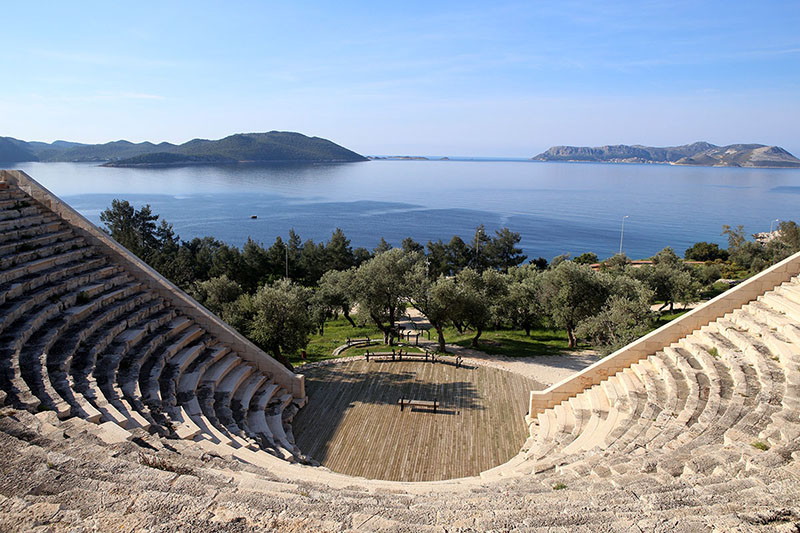One of the different grave types seen in Anatolia is the sarcophagus.
Among the Lycians, the tombs carved into the rocks in some Lycian cities and sarcophagi scattered on all four sides are the most important works to date. The most glorious of these sarcophagi is the Lycian monument, which is located on Uzun Carsi Street in Kas (Andifli) and is called the King's Tomb. (4th century BC)
The work consists of a single block and has an eight-line inscription on it in Lycian language.
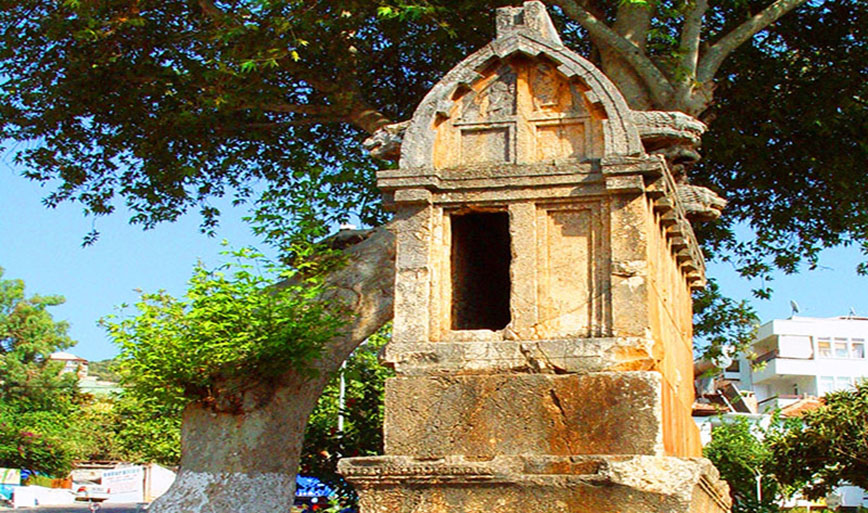
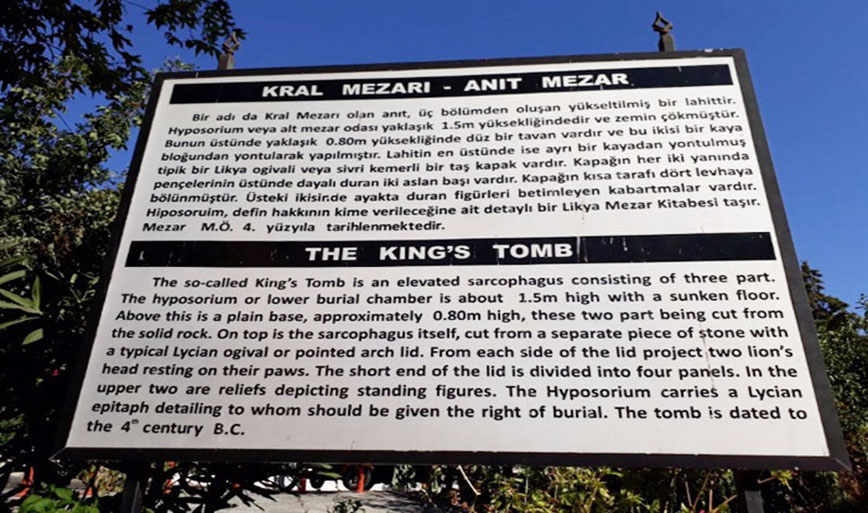
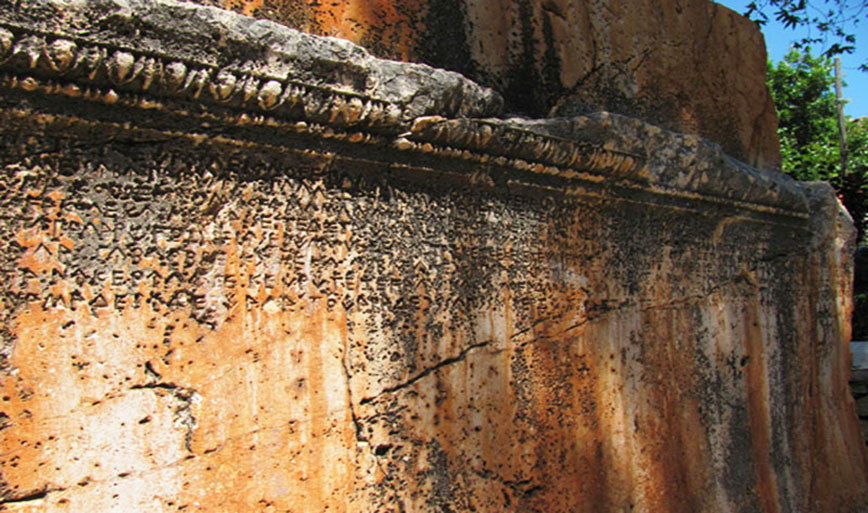
The sarcophagus, which is in a good position and made of a single block, has a bead motif and an eight-line inscription on the bottom of the 1.5 meter long bottom.
Since the inscription of this tomb dated to the 4th century BC could not be read, it was not understood who it belonged to. A rectangular prism-shaped monument's coffin was placed on this base. On the north-west pediment of the cap, a sad-looking male and a female figure were embroidered, leaning on a stick, throwing his right leg on his left leg.

